 |  |
By David Kier
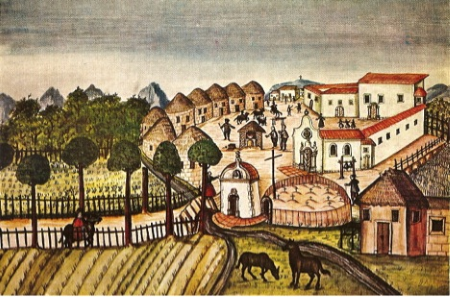
Once again, we discover that the history of a Baja California mission is not so simple to explain. Most books do not provide the entire mission story and typically, the story is not completely accurate. Santiago is a mission that had two beginnings, with two different names, and existed in three different places!
The Jesuits, with full autonomy over Baja California (per an arrangement made with the Spanish Crown), were eager to expand their conversion of Native tribes to Catholicism, build roads, establish agriculture, and have a safe port for the Manila galleons to take on fresh water and food, enroute to Acapulco from Asia.
In any new, potentially dangerous territory, the Jesuits were careful to not build in hostile areas, far from existing missions. The mission at Bahía La Paz was founded in November 1720. It was one of three missions founded that year. The other two missions were La Purísima and Guadalupe.
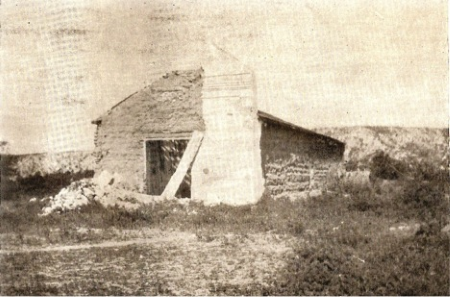
In July 1721, Padre Ignacio María Nápoli sailed south from Loreto to La Paz. This is where he began his exploration for a new mission site between La Paz and Cabo San Lucas. Padre Jaime Bravo of the La Paz mission joined Nápoli. The two spent eight difficult days traveling overland to reach the gulf shore at Bahía de las Palmas. This is where they believed the Cora Indians would be awaiting conversion. After ten days waiting to gain their confidence, Cora women and children came to the beach and accepted gifts of food and cloth from the Jesuit missionaries. The Cora, in turn, presented the Europeans with fresh fruit and seeds. Nápoli considered this first contact a success and they returned to La Paz to gather supplies for a new mission. Some writers have called this event, the founding of Mission Ensenada de las Palmas, causing some people from the Los Barriles area to look for mission ruins!
Because the trail between La Paz and Bahía de las Palmas was so long and difficult, Nápoli decided a mission should first be located midway between La Paz and Bahía de las Palmas. In 1722, Padre Nápoli founded his first mission near the place called Marinó by the Cora Natives, he had named the area ‘Santa Ana.’ This is where a soldier named Ignacio de Rojas discovered silver, two years earlier. Adobe rooms were built to serve as a chapel and a home for the padre.
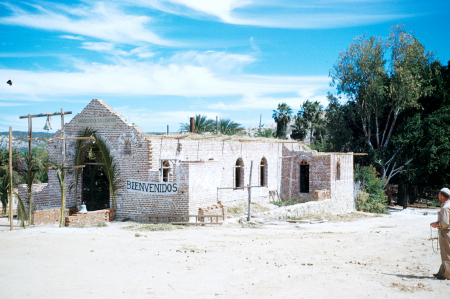
In 1723, Nápoli had collected enough food to feed the workforce needed to build a larger church for his mission of Santiago de los Coras, located at Santa Ana. A storm hit the region and the people took refuge inside the church that was being built. A wall collapsed upon them, injuring, and killing many. Nápoli and his soldiers were unharmed. Soon, the relatives of those dead or wounded placed blame on Nápoli and the Spaniards. Nápoli quit the Santa Ana project and returned to Loreto to regain his confidence to try again. Santa Ana would later become the first secular town on the peninsula with silver mining as the reason for its existence.
Padre Nápoli returned in 1724, but this time further to the south of the Cora lands and into the land of the Pericú, at a place they called Aiñiní. Mission Santiago el Apóstol Aiñiní was founded where water was abundant, and the mission remained in this area until it closed in 1795. Jesuit papers describing the new location were not widely circulated until 1973. Writers continued to call the mission ‘Santiago de los Coras’, in error. The original mission site, at Santa Ana, was raided and burned to the ground in 1725.
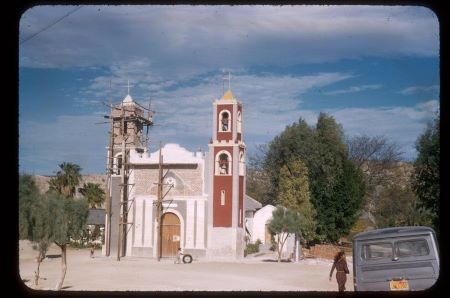
Mission Santiago el Apóstol Aiñiní was where the Pericú Revolt began, in 1734. Two Jesuits Padres were murdered, Lorenzo Carranco here at Santiago and Nicolás Tamaral at San José del Cabo. A Spanish soldier guarding the mission at La Paz was also killed while that mission’s padre (William Gordon) was elsewhere. The hostile Pericú also killed dozens of Native women and children who were at the missions. The uprising took over two years to be quelled before the rebuilding began at the four southernmost, destroyed missions: Santiago, San José del Cabo, Santa Rosa, and La Paz.
The Santiago mission was moved about two miles south, following the revolt. An interesting note of history was that the mission at San José del Cabo was closed from 1748 to 1768 and for those twenty years was made a visita of Santiago. In 1795, with dwindling Native populations, the mission was abandoned with its remaining population transferred to Mission San José del Cabo.
The town of Santiago developed around the old mission and a modern church was erected on the site, in the mid-1900s. The previous site was just north of town on a ranch and only has some stone foundations.
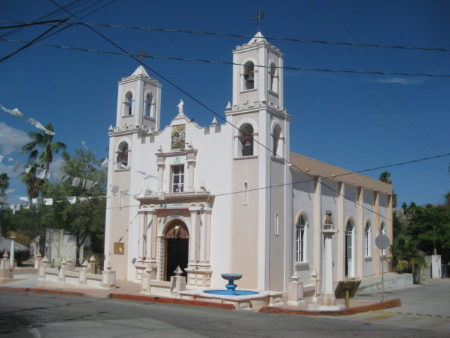
About David
David Kier is a veteran Baja traveler, author of 'Baja California - Land Of Missions' and co-author of 'Old Missions of the Californias'. Visit the Old Missions website.